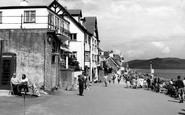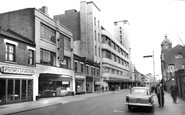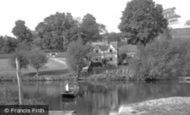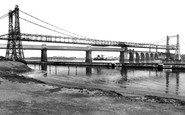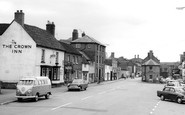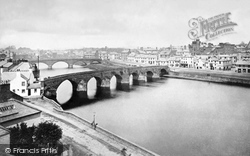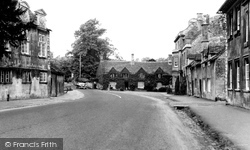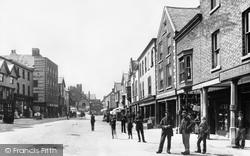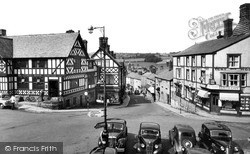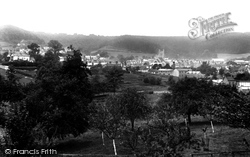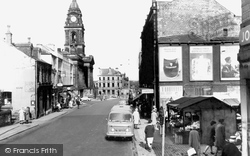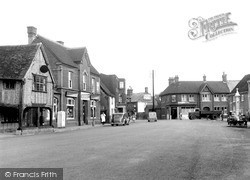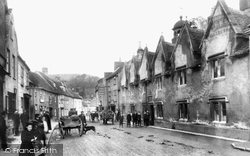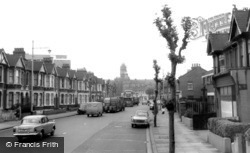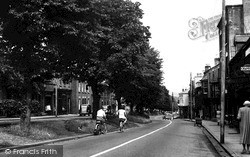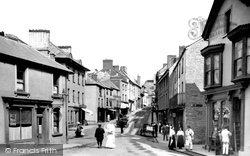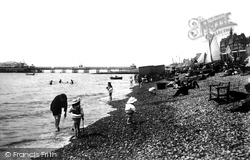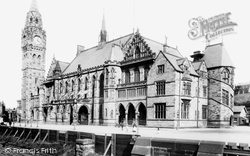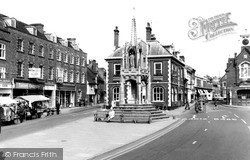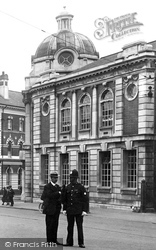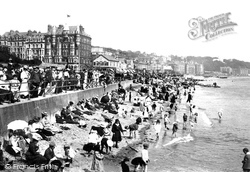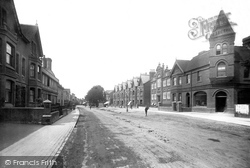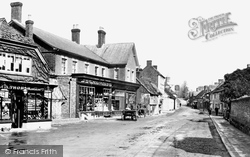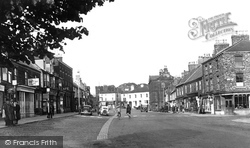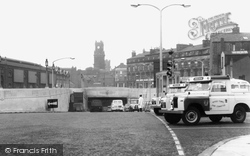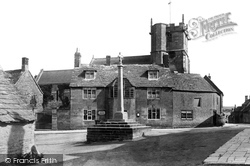Places
26 places found.
Those places high-lighted have photos. All locations may have maps, books and memories.
- Town End, Derbyshire
- Town End, Buckinghamshire
- Town's End, Somerset
- Towns End, Dorset
- Town End, Merseyside
- Town End, Cambridgeshire
- Town's End, Buckinghamshire
- West End Town, Northumberland
- Bolton Town End, Lancashire
- Kearby Town End, Yorkshire
- Town End, Cumbria (near Grange-Over-Sands)
- Town End, Cumbria (near Bowness-On-Windermere)
- Town End, Yorkshire (near Huddersfield)
- Town End, Yorkshire (near Wilberfoss)
- Town End, Cumbria (near Appleby-in-Westmorland)
- Town's End, Dorset (near Melbury Osmond)
- Town's End, Dorset (near Swanage)
- Town End, Cumbria (near Ambleside)
- Town End, Cumbria (near Lakeside)
- Town End, Cumbria (near Kirkby Lonsdale)
- Town End, Cumbria (near Ambleside)
- Town's End, Dorset (near Bere Regis)
- West-end Town, South Glamorgan
- Townend, Derbyshire
- Townend, Strathclyde (near Dumbarton)
- Townend, Staffordshire (near Stone)
Photos
26 photos found. Showing results 1,161 to 26.
Maps
195 maps found.
Books
160 books found. Showing results 1,393 to 1,416.
Memories
3,719 memories found. Showing results 581 to 590.
Wartime Defences
The photo caption for this in the book states that there were girders and wires and mines on Lyme beach during the war. My father Gilbert Atterbury was Town Clerk from the mid thirties until the late fifties and fought the War ...Read more
A memory of Lyme Regis in 1940 by
Woolwich, Powis Street C1965
This shows Powis Street in Woolwich. The large building in the middle of the photo is the RACS Co-op building, it is also the site in the distance of the first McDonalds shop in England. I was born in Balham in the late ...Read more
A memory of Woolwich
My Home Away From Home
I arrived in Totnes January 1944 and lived up at Dartington until a day before the invasion at Normandy. Totnes became our "hometown." I returned for the fiftieth anniversary and honored for being the first American to come back. ...Read more
A memory of Totnes in 1944 by
Camping Holiday
As a young teenager with fond memories of Evesham and surrounding areas, I enjoyed with two of my male friends, camping at Weir Camping Meadow, which was located by the River Avon down in the lower part of the town. The camping ...Read more
A memory of Evesham in 1940 by
So Long Ago, But Never Forgetten
I used to live in Eversham Road and to catch the trolley bus on the corner of Birchinton Avenue and Bolckow road was an every day event. I was just 10 years old when this picture was taken, the car probably belonged ...Read more
A memory of Grangetown in 1955 by
Weston Point I.C.I Recreation Club And Runcorn Town
Memory, Saturday Night Old Time dance upstairs in theI.C.I Club. My father played there on the drums. I was there with a girlfriend and her mother and father and grandmother, the old lady taught me a ...Read more
A memory of Runcorn in 1957 by
I Miss Shifnal And Have Very Happy Fond Memories.
I have just gone onto this site. I remember the Goliahs. It was when I was a little girl, Mr Goliah used to regularly visit my dad and I think at one stage he dropped off a load of cattle manure with a ...Read more
A memory of Shifnal by
Clare Road
I lived on Clare Road in Ystalyfera, and the Wern school was at the end of our street. I remember having a street party for the Silver Jubilee. I emigrated to Canada in 1978, but have not forgotten the Wern School and all of my friends ...Read more
A memory of Ystalyfera in 1976 by
When We Came Here
When our family, consisting of myself, Jean Pauline Smith, my mother who has since passed away (also called Jean, but her middle name is Audrey), and my sister and brother came to Bulwell, we came from the famous or infamous Balloon ...Read more
A memory of Bulwell in 1978 by
New Vicar For Dovercourt
My father was inducted as the new vicar on 31st December 1949 at All Saints Church. I was just nine at the time but I retain some dim memories of a packed church! My dad stayed at Dovercourt until his retirement in 1976. I ...Read more
A memory of Dovercourt in 1949 by
Captions
5,111 captions found. Showing results 1,393 to 1,416.
Dumfries itself became a royal burgh in the 12th century, but the two towns were not officially amalgamated until 1929.
Like many other Cotswold towns, Burford's fortunes were founded on wool, but leather and paper making were also important industries.
Fortunately for us, we can pore over their dress - and demeanour - in this image of Victorian Denbigh.
The word callis means almshouse or hospice, and possibly derives from the name Calais. St Peter's Church was 'pulled down' in 1560, and this building was built in 1863.
The mock-Tudor building seen here gives little indication of the real timber-framed buildings that remain in the town, although most would have been destroyed when Owain Glyndwr proclaimed himself Prince
As well as the tower of St James' church, a number of industrial chimney stacks punctuate the town skyline, hinting at Dursley's manufacturing past.
Looming over the town is the tower of the town hall, clearly more than a little influenced in its design by its more prestigious neighbour at Leeds.
Once an important market town, Shefford was blighted this century by through traffic; its central T-junction was a bottleneck until the town was recently by-passed.
Here we see the Parish Church as we look from the High Street through Middle Row, part of the 'old town' of Ashford.
On the far side of the street are the almshouses bequeathed to the town by the former Sheriff of London Hugh Perry, who held the office in 1632.
Here we approach East Ham's town centre along the busy North Circular Road, which seems in places merely a casual linkage of suburban roads.
Newnham is a delightful, Severnside town today, just as it was when this scene was captured.
Brecon stands at the confluence of the River Usk and the smaller Honddu. The town can be confusing for the visitor, as not only has it two rivers, but also two High Streets.
The centrepiece of Brighton was and remains the extraordinary Pavilion or seaside palace.
Plans were requested for a Town Hall costing about £20,000, but by its opening on 27 September 1871 the bill was £160,000. W H Crossland designed the 88ft-long building.
This photograph of the 15th-century Market Cross shows just how far the original concept of a market town has moved in the 20th century.
IN SPITE of the depression, the town's population grew to 36,404 in 1901, and the town grew richer.
On the south side are the handsome stone piers, and a deep harbour cutting off most of the town from the cliffs of Douglas Head.
This excellent view captures the eastward expansion of the town in the late 19th century very well.
Frith's Victorian photographer was in the lane leading to the abbey gateway, and looking across the Market Place to what is now undoubtedly the finest building in Abingdon: the Town Hall.
This small town grew up on the course of the Roman road from London to Chichester, later known as Stane (or stone paved) Street.
Here we have a clearer view of the tall Town Hall building to the right, and beyond it lies the premises of the National Provincial Bank.
This was the first road tunnel under the River Mersey, and was opened by King George V and Queen Mary in July 1934.
The Town Pump and Market Cross (centre) have ancient steps and a relatively recent shaft, erected to celebrate Queen Victoria's diamond jubilee in 1897.
Places (26)
Photos (26)
Memories (3719)
Books (160)
Maps (195)



